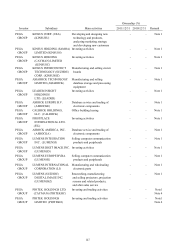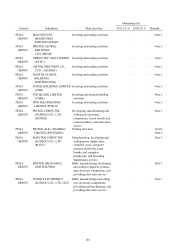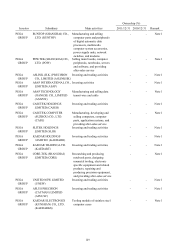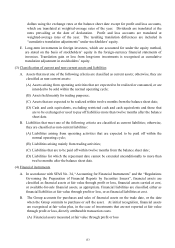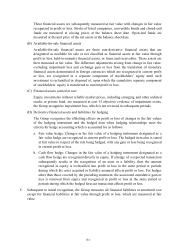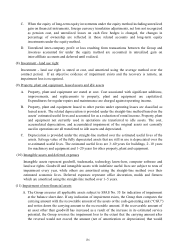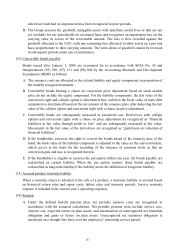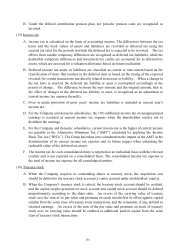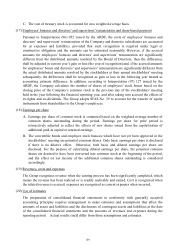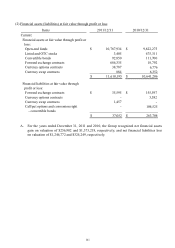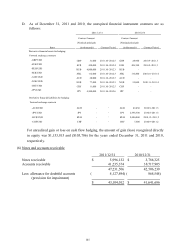Asus 2011 Annual Report Download - page 159
Download and view the complete annual report
Please find page 159 of the 2011 Asus annual report below. You can navigate through the pages in the report by either clicking on the pages listed below, or by using the keyword search tool below to find specific information within the annual report.
155
~27~
(5) Notes and accounts receivable and other receivables
A. Notes and accounts receivable are claims resulting from the sale of goods or services. Other
receivables are those arising from transactions other than the sale of goods or services.
Before December 31, 2010, allowance for doubtful accounts is provided according to the
evaluation of the collectability of notes and accounts receivable and other receivables, taking
into account the bad debts incurred in prior years and the aging analysis of the receivables.
B. Effective January 1, 2011, notes and accounts receivable and other receivables are recognized
initially at fair value and subsequently measured at amortized cost using the effective interest
method, less provision for accumulated impairment. A provision for impairment is established
when there is objective evidence that the receivables are impaired. The amount of the
provision is the difference between the asset’s carrying amount and the present value of
estimated future cash flows, discounted at the original effective interest rate. When the fair
value of the asset subsequently increases and the increase can be objectively related to an event
occurring after the impairment loss was recognized in profit or loss, the impairment loss shall
be reversed to the extent of the loss previously recognized in profit or loss. Such recovery of
impairment loss shall not make the asset’s carrying amount more than its amortized cost where
no accumulated impairment loss was recognized. Subsequent recoveries of amounts previously
written off are recognized in profit.
(6) Inventories
The costs of inventories consist of those necessary expenditures incurred in bringing each item of
inventory to its usable condition and location. Cost is calculated on a weighted-average basis.
Inventories are valued at the lower of cost or net realizable value. Net realizable value by item is
determined based on the estimated selling price in the ordinary course of business, less estimated
costs of completion and costs to sell.
(7) Long-term equity investments accounted for under the equity method
A. Long-term investments are accounted for under the equity method when the percentage of
ownership held by the Group exceeds 20% or if the Group owns less than 20% of the
investee’s capital but have significant influence on the investee’s operations. If an investee
company accounted for under the equity method issues new shares and the Company does not
purchase new shares proportionately, then the investment percentage, and the equity in net
assets of the investee, will be changed. The effect of such change is adjusted against the
additional paid-in capital resulting from long-term equity investments or retained earnings.
B. The difference between the cost of the investment and the amount of underlying equity in net
assets of an investee attributed to depreciable, depletable, or amortizable assets is amortized
over the estimated remaining economic years. The difference attributed to the carrying amount
in excess of or lower than the fair value of assets is written off entirely when the difference
disappear. The cost of investment in excess of the fair value of identifiable net assets is
recognized as goodwill and is no longer amortized. The difference attributed to the fair value
of identifiable net assets in excess of the cost of investment causes a proportional decrease in
the carrying amount of non-current assets. When the carrying amount of non-current assets is
reduced to zero, the remaining difference is recorded as extraordinary gain.




